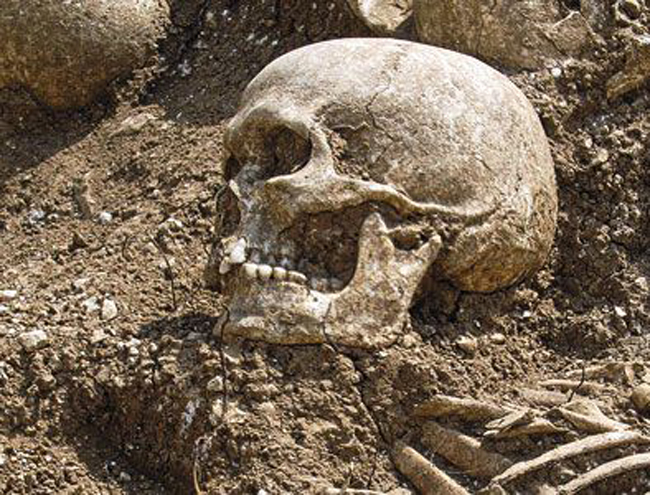London: Archaeologists have ascertained that a mass grave unearthed in the 1980s dates back to the Viking Age and may have been a burial site of the Viking Great Army war dead.
The remains were initially thought to be associated with the Vikings, but radiocarbon dates suggested that the grave, consisting of nearly 300 bones, dates from the 7th and 8th centuries.
However, the new study, appearing in the journal Antiquity, proves that they are all consistent with a single date in the 9th century and therefore with the Viking Great Army, also known the Great Heathen Army.
“The previous radiocarbon dates from this site were all affected by something called marine reservoir effects, which is what made them seem too old,” said Cat Jarman from the University of Bristol’s Department of Anthropology and Archaeology.
“The date of the Repton charnel bones is important because we know very little about the first Viking raiders that went on to become part of considerable Scandinavian settlement of England.
“Although these new radiocarbon dates don’t prove that these were Viking army members it now seems very likely. It also shows how new techniques can be used to reassess and finally solve centuries old mysteries,” Jarman said.
According to historical records, the Viking Great Army spent winter in Repton, Derbyshire, in 873 A.D.
Excavations in Repton in the 1970s and 1980s discovered several Viking graves and a charnel deposit of nearly 300 people underneath a shallow mound in the vicarage garden.
The mound appears to have been a burial monument linked to the Great Army.
An Anglo-Saxon building, possibly a royal mausoleum, was cut down and partially ruined, before being turned into a burial chamber.
One room was packed with the commingled remains of at least 264 people, around 20 per cent of whom were women, while 80 per cent remains were of men, mostly aged 18 to 45, with several showing signs of violent injury.
Among the bones were Viking weapons and artefacts, including an axe, several knives and five silver pennies dating to the period 872-875 A.D.
IANS

